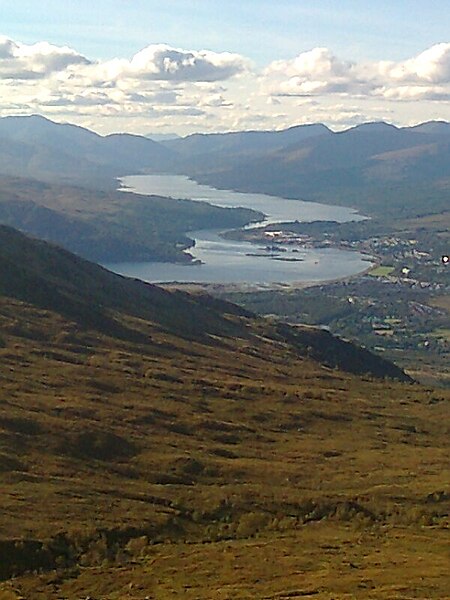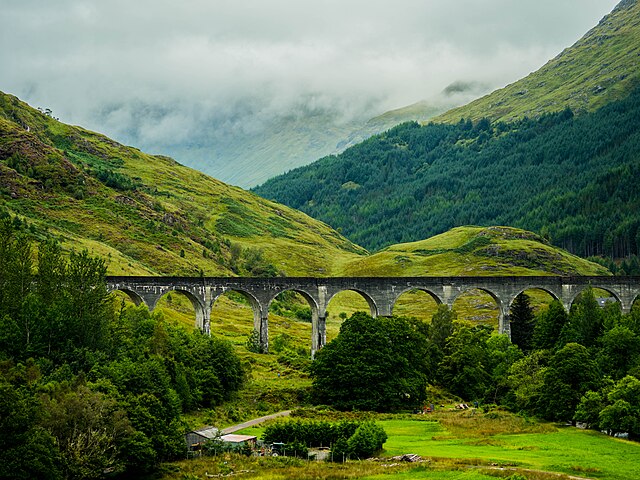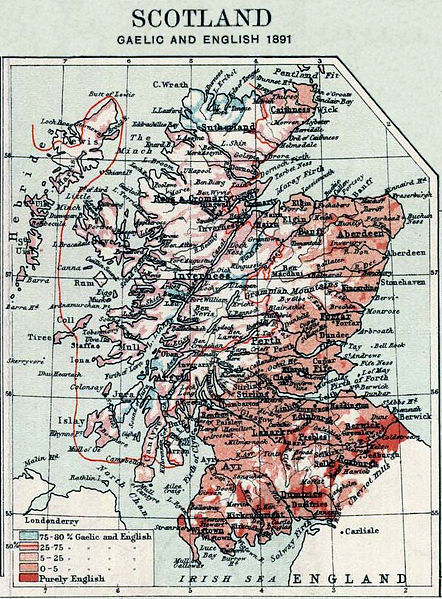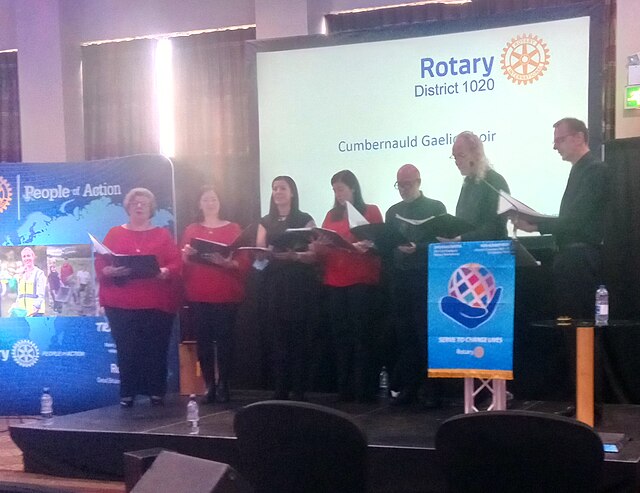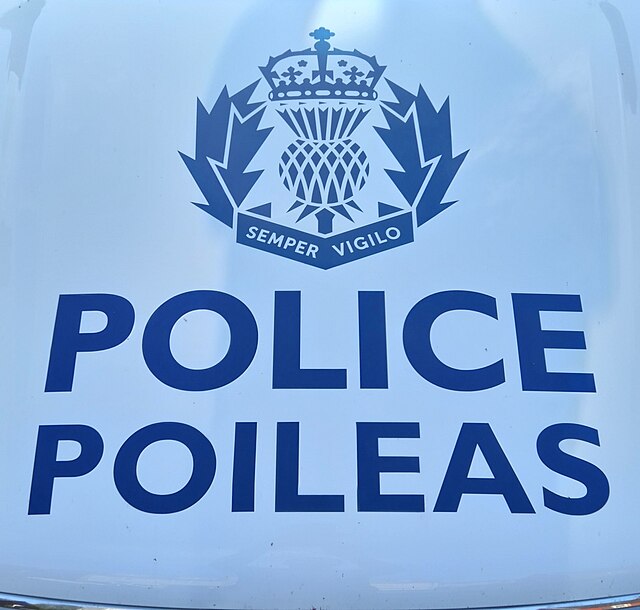Lochaber is a name applied to a part of the Scottish Highlands. Historically, it was a provincial lordship consisting of the parishes of Kilmallie and Kilmonivaig, as they were before being reduced in extent by the creation of Quoad Sacra parishes in the 19th century. Lochaber once extended from the Northern shore of Loch Leven, a district called Nether Lochaber, to beyond Spean Bridge and Roybridge, which area is known as Brae Lochaber or Braigh Loch Abar in Gaelic. Lochaber is now also used to refer to a much wider area, one of the 16 ward management areas of the Highland Council of Scotland and one of eight former local government districts of the two-tier Highland region. The main town of Lochaber is Fort William.
Loch Eil
The viaduct at Glenfinnan
Inverlochy Castle, caput of the provincial lordship of Lochaber and site of a possible earlier Pictish settlement
Scottish Gaelic, also known as Scots Gaelic or simply Gaelic, is a Goidelic language native to the Gaels of Scotland. As a Goidelic language, Scottish Gaelic, as well as both Irish and Manx, developed out of Old Irish. It became a distinct spoken language sometime in the 13th century in the Middle Irish period, although a common literary language was shared by the Gaels of both Ireland and Scotland until well into the 17th century. Most of modern Scotland was once Gaelic-speaking, as evidenced especially by Gaelic-language place names.
1891 distribution of English (including Scots) and Gaelic in Scotland 75–80% Gaelic, and English ━ 25–75% Gaelic, and English; line indicates the 50% isogloss 5–25% Gaelic, and English 0–5% Gaelic, and English Purely English
Cumbernauld Gaelic Choir in 2021
Anne Lorne Gillies speaking publicly in the Scottish Gaelic language
Police Scotland vehicle logo (Bilingual)

